14 Iconic Antique Dishware Patterns Every Collector Should Know
Antique dishware patterns are not just beautiful; they also carry rich histories and craftsmanship that make them highly collectible. Each design tells a story, whether it’s the intricate artistry of a royal dinner set or the simple charm of a folk-art piece. These timeless patterns have been passed down through generations, with many pieces becoming valuable collectibles. Whether you’re a seasoned collector or just starting, knowing these iconic designs can help you spot quality pieces. From classic blue and white porcelain to vibrant floral designs, these patterns continue to capture the hearts of collectors. The value of these dishware sets varies based on their age, rarity, and condition.
This post may contain affiliate links, which helps keep this content free. Please read our disclosure for more info.
Blue Willow Pattern
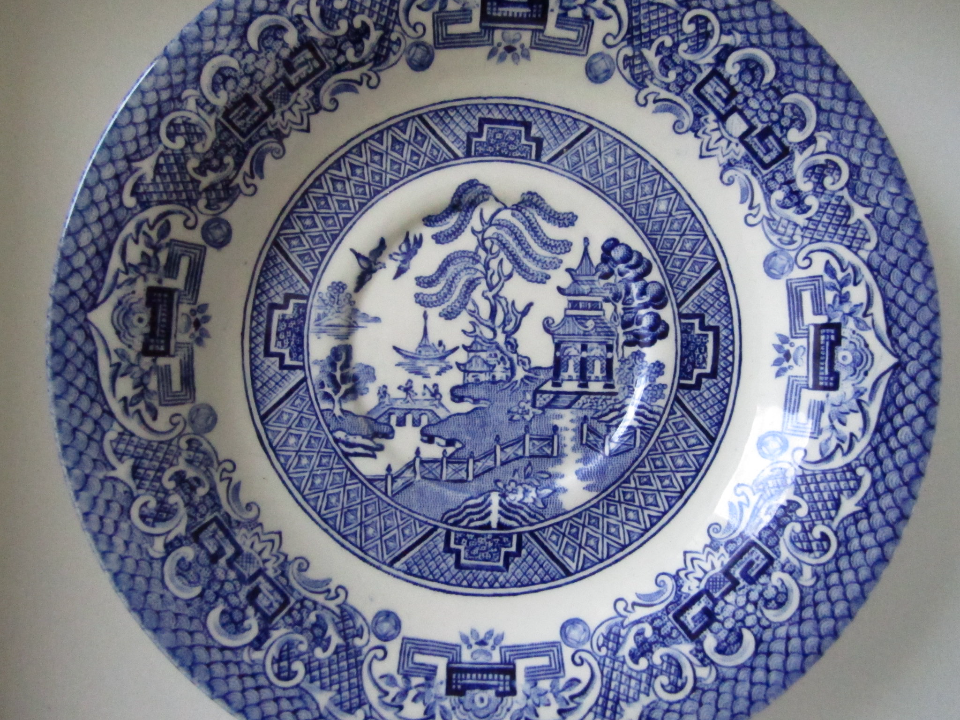
The Blue Willow pattern is one of the most recognizable and timeless designs in antique dishware. Originating in England in the late 18th century, it features a scene of a willow tree, a bridge, and two lovers, all set against a traditional Chinese landscape. The design was first created by Thomas Minton and has been widely reproduced by many porcelain manufacturers since. The pattern evokes a sense of romance and nostalgia, making it a favorite among collectors and home decorators alike. It has been used in everything from tea sets to serving dishes, making it highly versatile and beloved.
The market value of a Blue Willow dishware set can range from $100 to $300, depending on the age and condition of the pieces. Sets that have been well-preserved or made by famous manufacturers like Wedgwood, Spode, or Royal Worcester tend to fetch higher prices. Older pieces or those from the first production runs can command even higher prices due to their rarity and historical significance.
Flow Blue Pattern
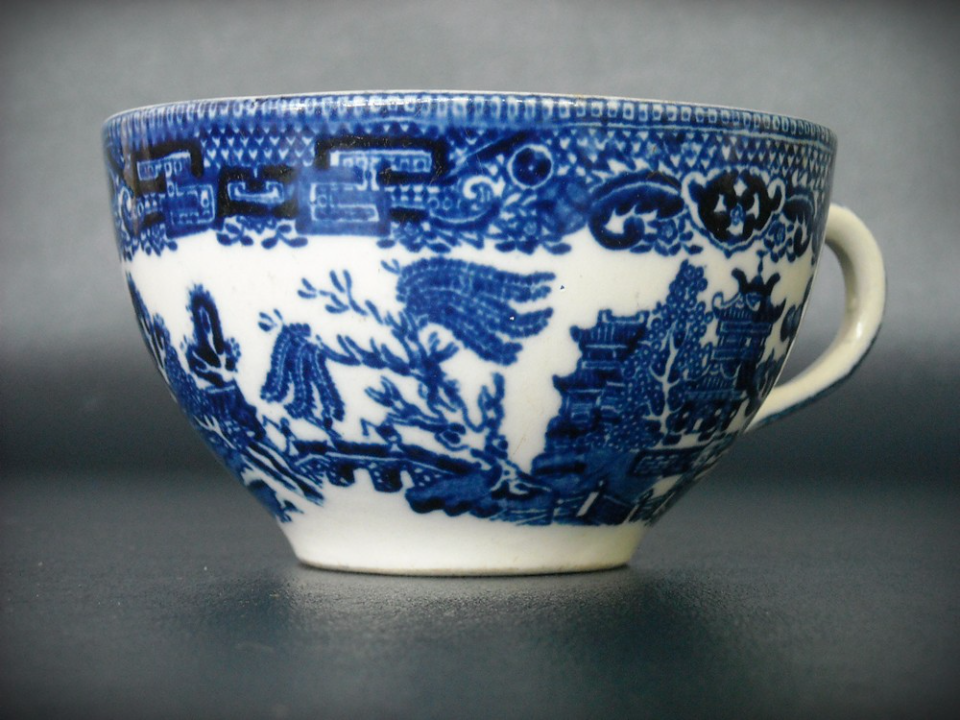
Flow Blue is a unique and striking design style known for its distinctive blue glaze that often “flows” into the white porcelain. First produced in the early 19th century in England, the design includes intricate floral and natural motifs. The technique was originally accidental, but it soon became a desired effect for many collectors. The style was particularly popular during the Victorian era and was used in everything from dinner plates to teacups. The name “Flow Blue” comes from the way the blue pigment spreads in the glaze, creating a soft, hazy effect that gives the pattern its unique charm.
Flow Blue dishware is valued for both its rarity and its decorative beauty. Depending on the rarity of the piece, prices can vary, with some individual plates or cups selling for as much as $150 to $500. Sets that feature rare motifs or those produced by highly regarded manufacturers, such as Royal Worcester or Minton, can fetch much higher prices. Collectors also value the history behind Flow Blue, as it represents a period of experimentation and innovation in porcelain production.
Rose Medallion
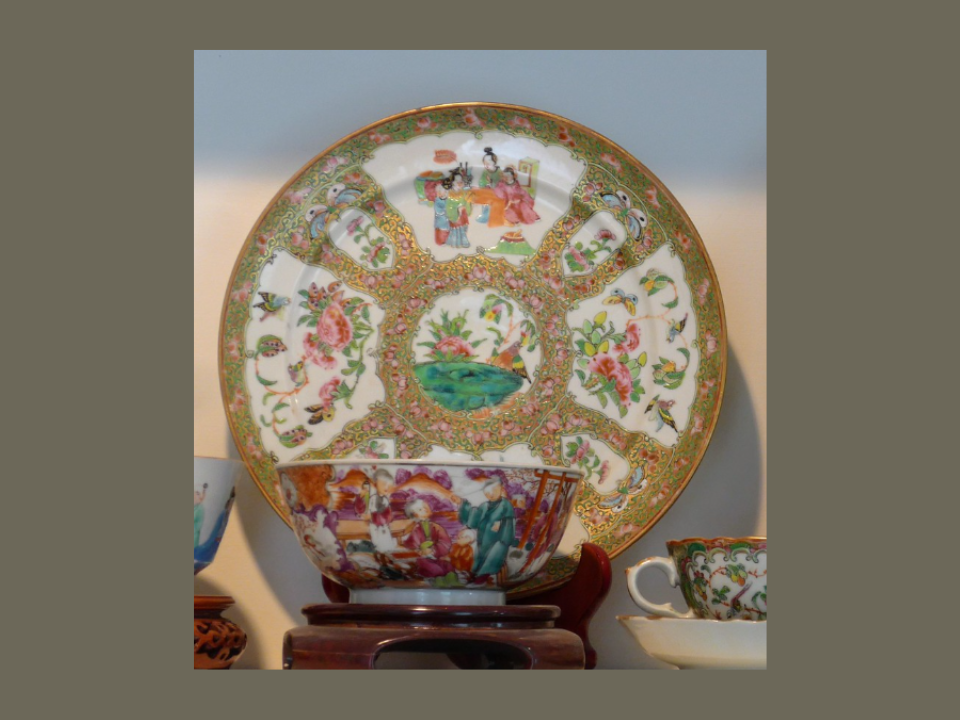
Rose Medallion is a beautiful Chinese-inspired design that gained popularity in the 19th century. Characterized by delicate floral motifs in shades of pink, red, and gold, this pattern was often used in porcelain pieces such as plates, bowls, and teapots. The design usually features intricate scenes of Chinese figures, birds, and flowers, creating a romanticized depiction of Chinese life. It was produced by many Chinese porcelain manufacturers and later made its way to Europe and America, where it became a symbol of elegance and wealth.
Collectors highly value Rose Medallion pieces due to their vibrant colors and intricate design. Depending on the condition and age, individual pieces can be worth anywhere from $200 to $1,000. Well-preserved sets with rare designs or those from famous Chinese manufacturers, such as the Jingdezhen region, can fetch significantly higher prices. Rose Medallion continues to captivate collectors for its historical and artistic significance.
Spode Blue Italian
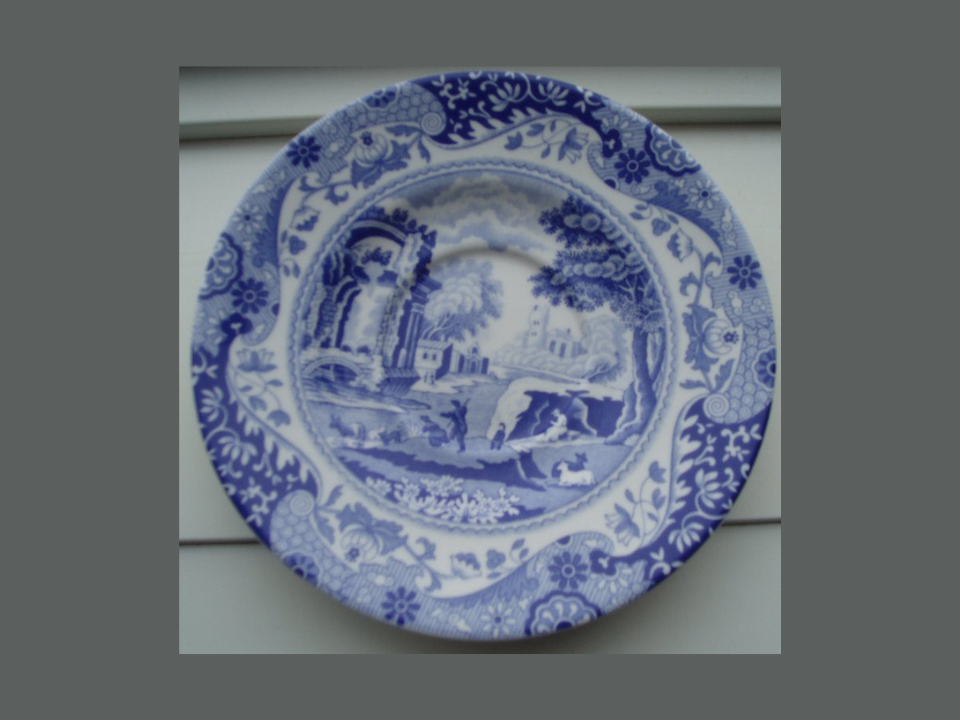
Spode Blue Italian is a classic design that was first introduced by Spode in 1816. This pattern features a scenic Italian landscape with structures like temples, bridges, and villas, surrounded by trees and mountains, all rendered in beautiful blue on a white background. The design is heavily inspired by the scenic views of Italy and was meant to evoke the charm and elegance of Italian countryside life. Over the years, Blue Italian has become one of Spode’s most iconic patterns, adored for its timeless appeal and versatility.
Due to its enduring popularity, a set of Spode Blue Italian dishes can range in price from $150 to $600 depending on the condition and whether it is a rare early edition. Older pieces and limited edition sets tend to command higher prices, especially those featuring intricate or detailed depictions of the Italian countryside. Collectors are drawn to the authenticity of the design and its consistent presence in homes and fine dining.
Limoges China
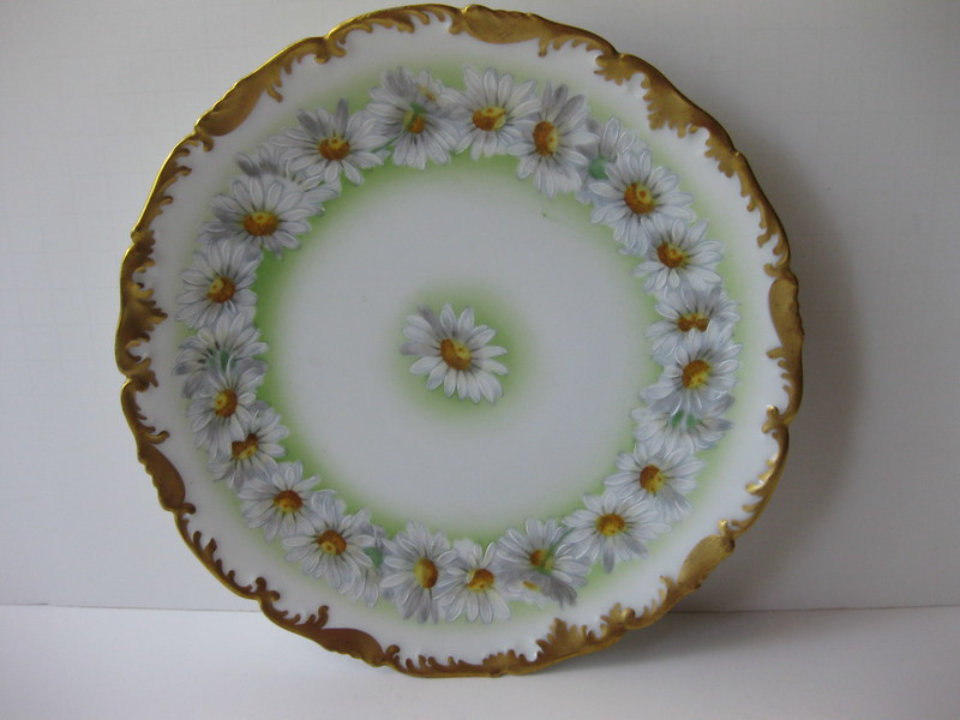
Limoges China refers to fine porcelain made in the Limoges region of France, famous for its intricate designs, vibrant colors, and superior craftsmanship. Known for its exquisite craftsmanship and delicate designs, Limoges dishware often features hand-painted florals, gold accents, and elaborate borders. The city of Limoges has a rich history of porcelain production dating back to the 18th century, and it has been favored by royalty and aristocrats throughout European history. The highly detailed work and use of luxury materials make Limoges China highly collectible, often considered a symbol of refinement and high taste.
An authentic set of Limoges China can fetch anywhere from $500 to $3,000, depending on its maker, age, and condition. Certain sets or rare pieces by prestigious manufacturers like Haviland, Pouyat, or Guerin can reach even higher values. The combination of historical significance, fine artistry, and enduring elegance makes Limoges one of the most prized porcelain collections for antique enthusiasts.
Royal Worcester

Royal Worcester is one of the oldest and most prestigious porcelain manufacturers in England. The company began in the mid-18th century and produced a wide range of fine china. Many Royal Worcester pieces feature delicate floral designs, as well as intricate detailing in both the porcelain and the gilding. The manufacturer was known for using high-quality porcelain and producing pieces with delicate painting techniques, often hand-painted, making each piece unique. Royal Worcester pieces were highly prized by European nobility and are still regarded as some of the finest examples of English porcelain.
Depending on the specific pattern and its rarity, Royal Worcester pieces can vary significantly in price. A full dinner set may cost anywhere from $500 to $2,000 or more for particularly rare patterns. Collectors highly value the intricate artwork and the historical significance of Royal Worcester, as it represents one of the pinnacles of British porcelain manufacturing.
Wedgwood Jasperware
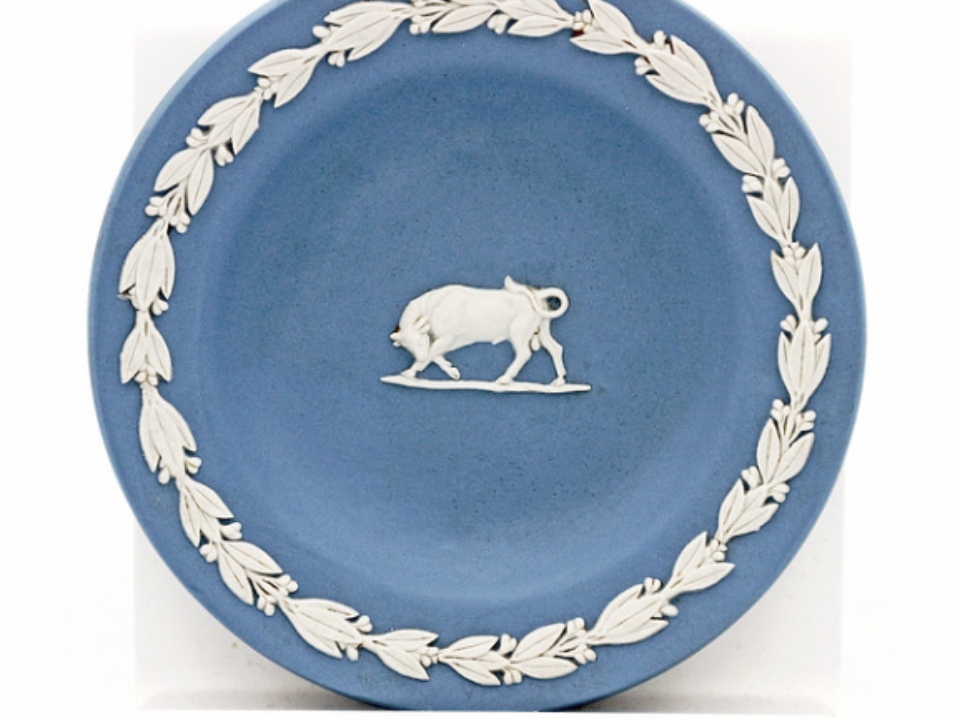
Wedgwood Jasperware, first produced in the late 18th century, is a unique and famous style of pottery that is immediately recognizable. It is known for its solid color and relief decorations, typically featuring neoclassical figures and motifs. The most famous color is the pale blue background, often referred to as “Wedgwood blue.” This porcelain is not glazed but is instead made of a stoneware body, giving it a distinctive matte finish.
Due to its enduring popularity, a set of Wedgwood Jasperware can be found for anywhere between $100 and $1,500, depending on the piece and its condition. Rare colors or unusual shapes can command higher prices. Wedgwood’s historical significance in the development of fine porcelain and its neoclassical designs continue to make Jasperware a beloved and highly collectible pattern.
Blue and White Delftware
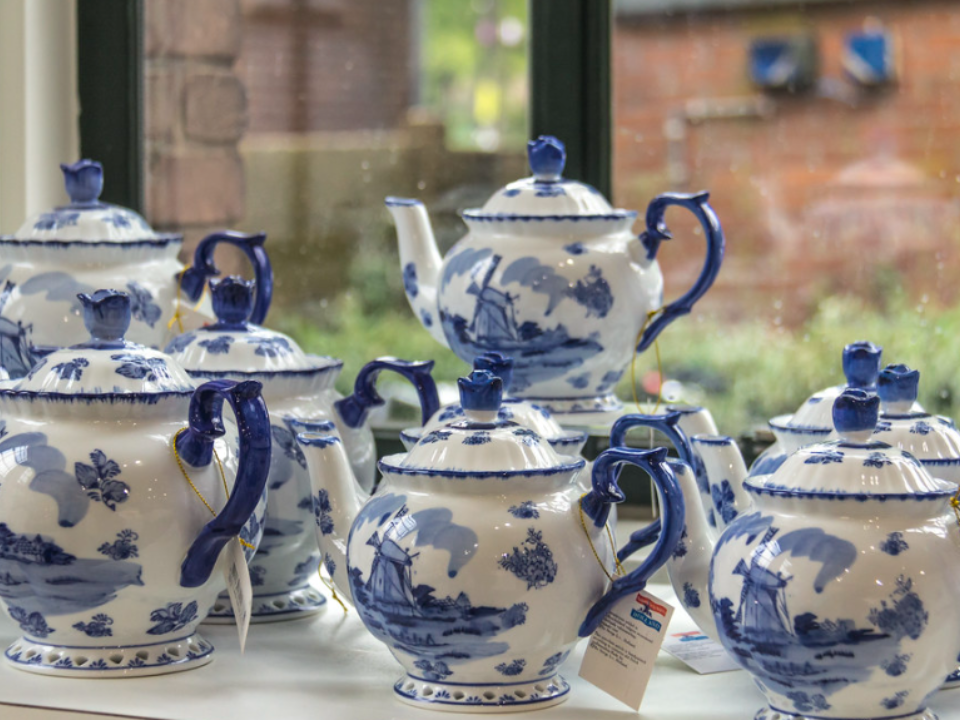
Delftware refers to pottery that originates from the Dutch city of Delft. The blue and white designs, often depicting scenes from nature, landscapes, and everyday life, are highly sought after by collectors. Delftware has been produced since the 16th century, making it one of the oldest and most enduring forms of European pottery. The pieces are often hand-painted, and the use of cobalt blue in the decoration gives them a striking and timeless look. Collectors value Delftware for its historical roots, artistic merit, and the role it played in the development of European ceramics.
A piece of authentic Blue and White Delftware can cost anywhere from $200 to $1,500, with rarer pieces or sets from renowned makers fetching higher prices. The price varies based on the age, quality, and condition of the item, with some particularly rare or well-preserved pieces reaching even higher valuations. Delftware continues to captivate collectors due to its classic design and historical legacy.
Minton Haddon Hall
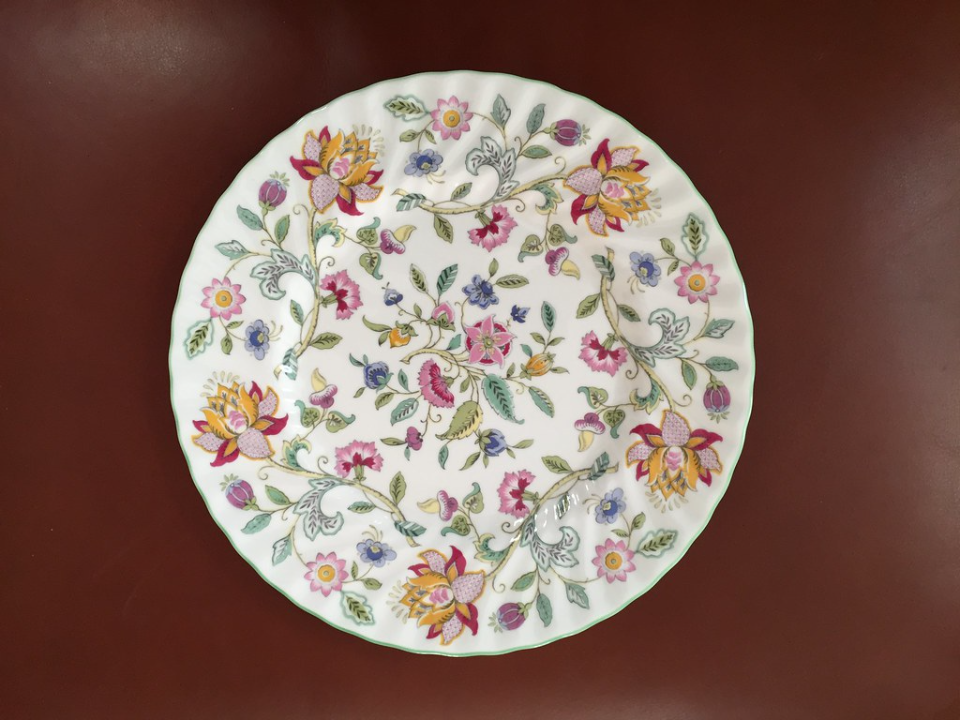
Minton Haddon Hall is a classic pattern that was first produced by Minton China in the early 20th century. The design features a series of delicate floral sprays, often in shades of pink, green, and gold, set against a white background. Minton Haddon Hall is known for its fine craftsmanship and elegance, making it a highly desirable pattern for collectors. Its intricate floral motifs and the use of gold accents create a sophisticated look that remains timeless.
Depending on the condition and whether it is a full set or individual pieces, Minton Haddon Hall can range in value from $150 to $700. Sets that are in pristine condition or feature limited edition designs are particularly sought after and can command higher prices.
Royal Crown Derby Imari
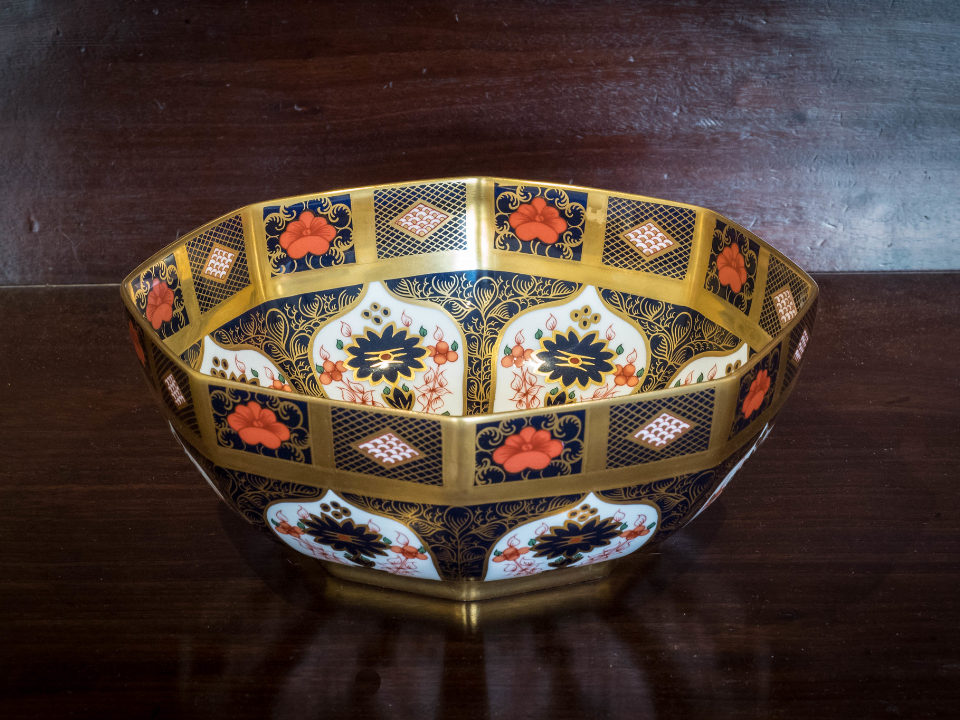
The Royal Crown Derby Imari pattern is a distinctive design characterized by its use of rich reds, blues, and gold accents. Originating in the 18th century, this pattern was inspired by the Japanese Imari porcelain designs, which featured bold colors and intricate patterns. Royal Crown Derby is renowned for its high-quality porcelain and decorative artistry. The Imari pattern quickly gained popularity and became one of the brand’s signature designs, admired for its vibrant, eye-catching appeal.
Imari pieces are highly collectible, with values typically ranging from $150 to $1,500, depending on the rarity and condition of the items. Certain limited edition or rare pieces can be worth significantly more, especially those produced in the early 19th century.
Wedgwood Queensware
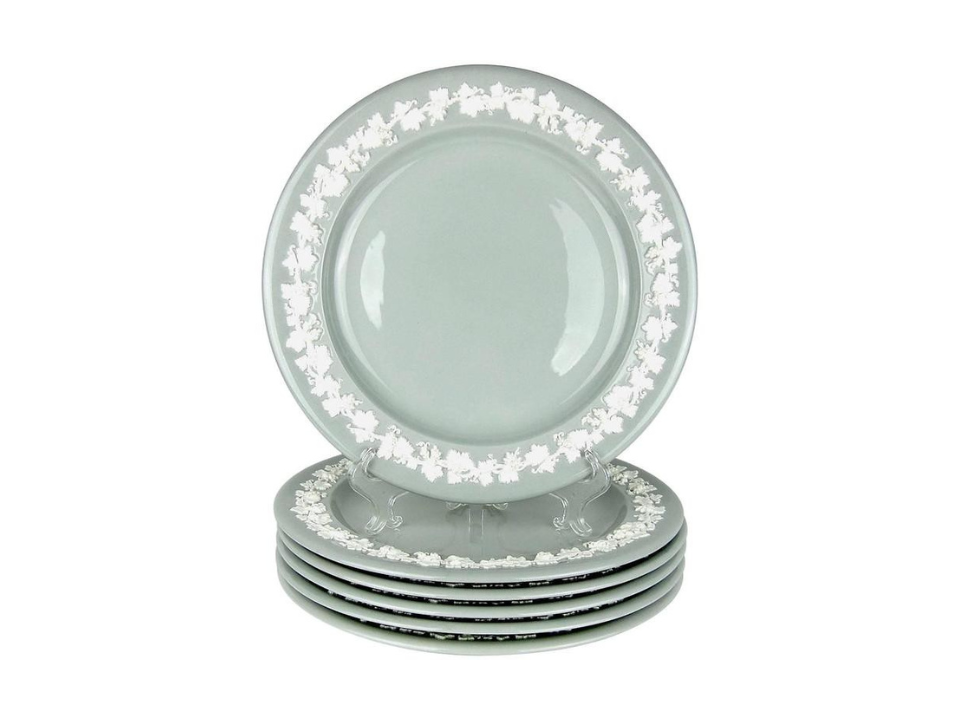
Wedgwood Queensware, introduced in the 18th century, is known for its smooth, cream-colored finish and delicate patterns. The range includes both dinnerware and decorative items, often featuring floral motifs or neoclassical designs. Collectors prize this pattern for its elegant simplicity and historical significance. Wedgwood Queensware has become an enduring symbol of classic British porcelain, often associated with royalty and aristocracy.
Wedgwood Queensware can be found for prices ranging from $100 to $600, depending on the size and condition of the set. Larger sets with complete pieces are often valued higher. Collectors also look for pieces from early production runs, which can be particularly valuable.
Herend Rothschild Bird

Herend Rothschild Bird is a pattern produced by the famous Hungarian porcelain manufacturer Herend. Known for its vibrant colors and intricate designs, this pattern features a variety of birds perched on branches and surrounded by flowers. The hand-painted details and use of gold accents add to the appeal of these pieces. First created in the 19th century, the Rothschild Bird design remains one of Herend’s most popular and sought-after collections.
The market value for Herend Rothschild Bird dishware typically ranges from $200 to $2,000, depending on the specific piece and condition. Limited edition pieces or those with especially vibrant colors can be valued much higher, making them a prized possession for collectors.
Wedgwood Florentine
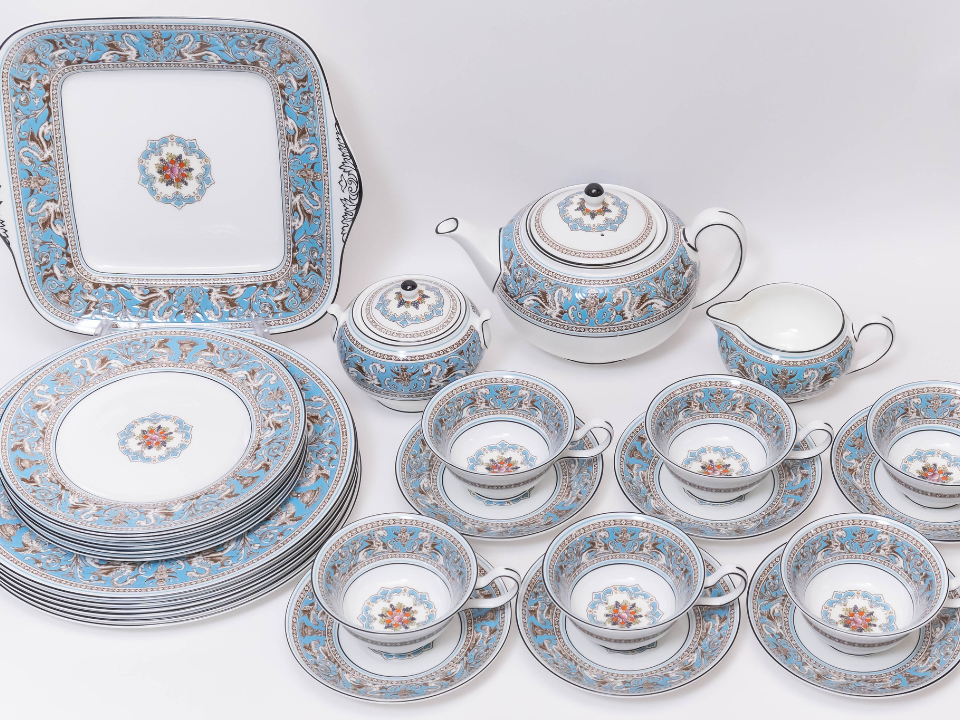
Wedgwood Florentine is a beautiful pattern that features elegant floral and foliate designs in shades of gold, blue, and white. First introduced in the 18th century, it has been a symbol of sophistication and fine taste. Florentine pieces are often found in both porcelain and earthenware forms, making them versatile for collectors. The refined aesthetic, combined with Wedgwood’s renowned quality, makes Florentine a standout collection in the world of fine china.
Wedgwood Florentine dishware can range from $100 to $1,500, depending on the piece’s rarity and condition. Limited edition or particularly well-preserved pieces are highly sought after, making them more valuable.
Royal Worcester Evesham
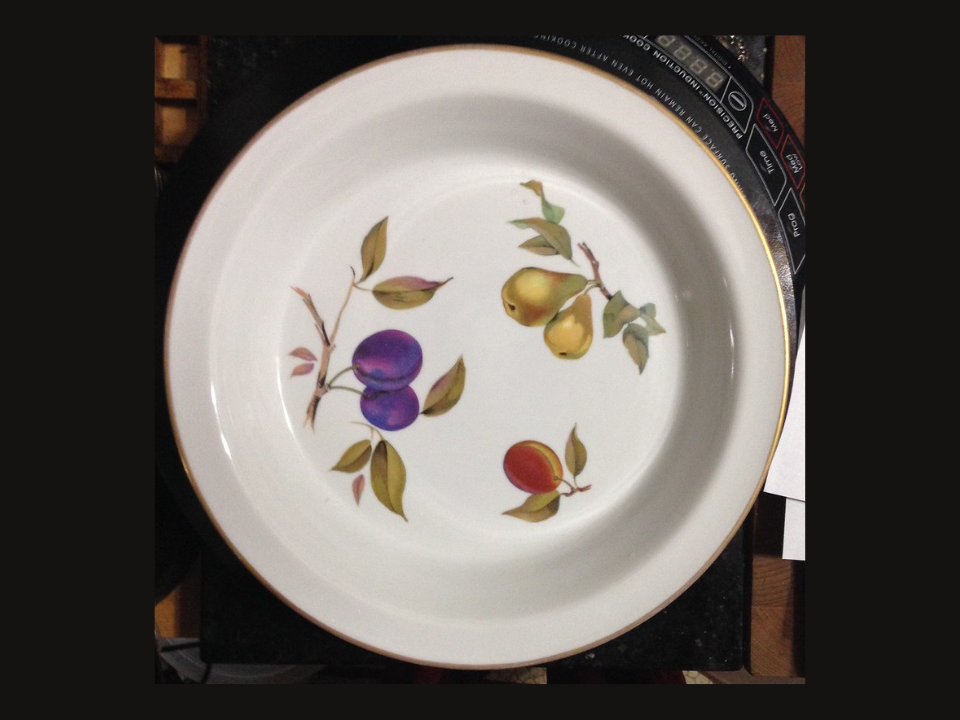
Royal Worcester Evesham is a charming pattern known for its fruit-themed designs, including apples, pears, and berries. This pattern, introduced in the 1960s, has become a favorite for collectors due to its vintage appeal and high-quality craftsmanship. The colorful fruit designs add a touch of elegance to any table setting. Evesham is particularly loved for its nostalgic connection to the past and the practicality of its design.
A set of Royal Worcester Evesham can be found for anywhere between $100 and $600, depending on the size and condition of the set. Larger sets with complete pieces are often valued higher, particularly those in excellent condition or with rare fruit designs.
This article originally appeared on Avocadu.
